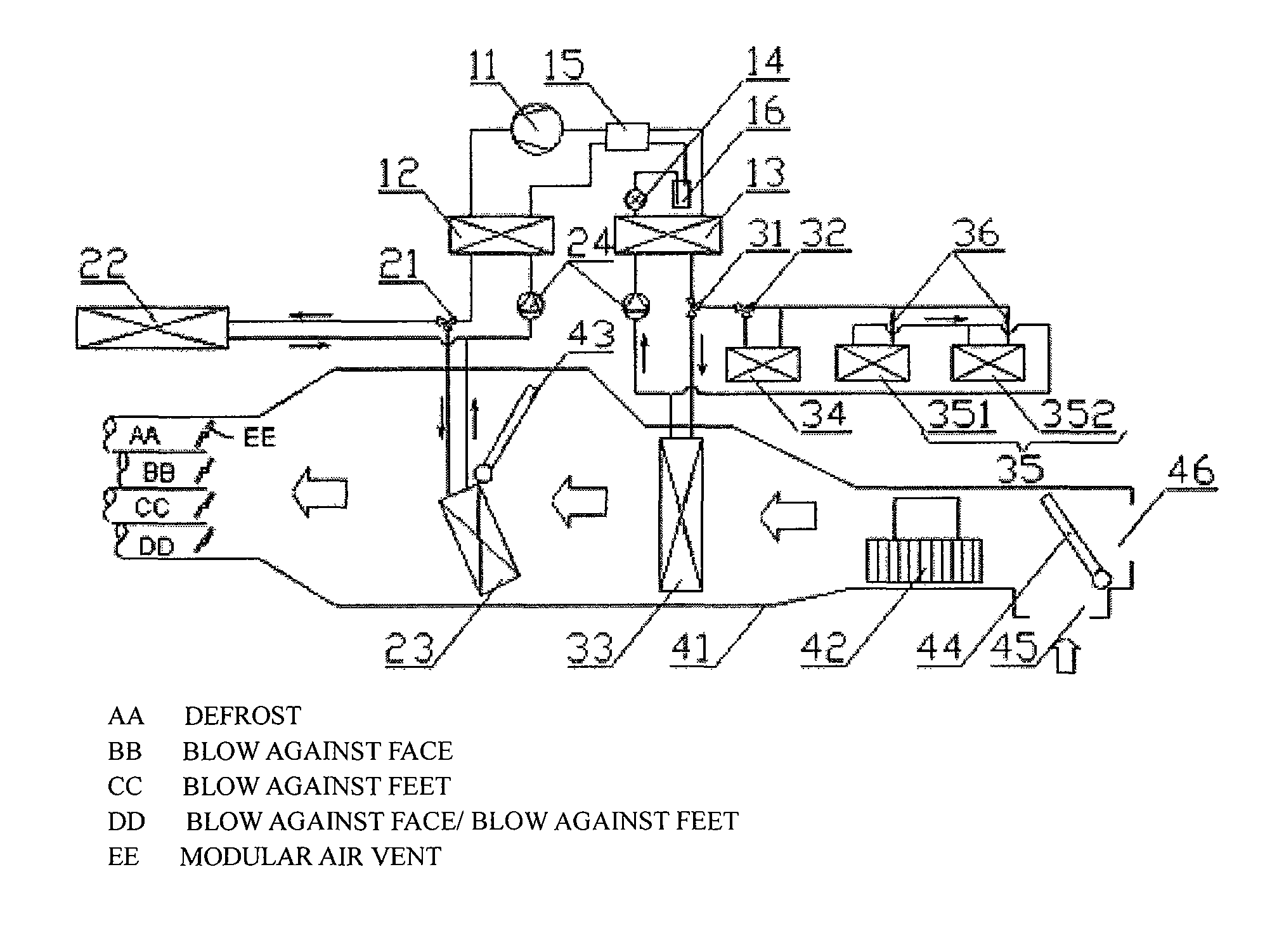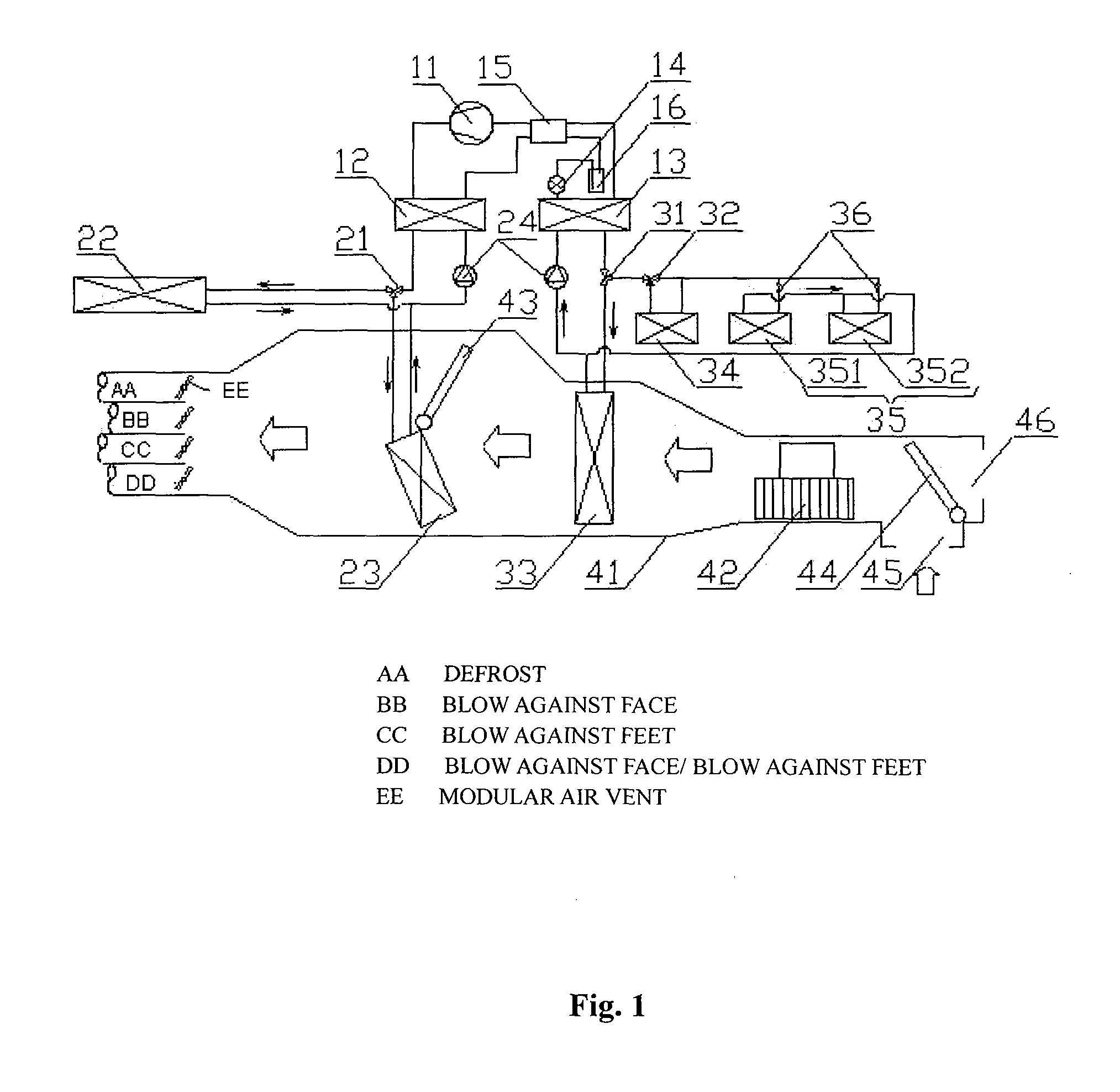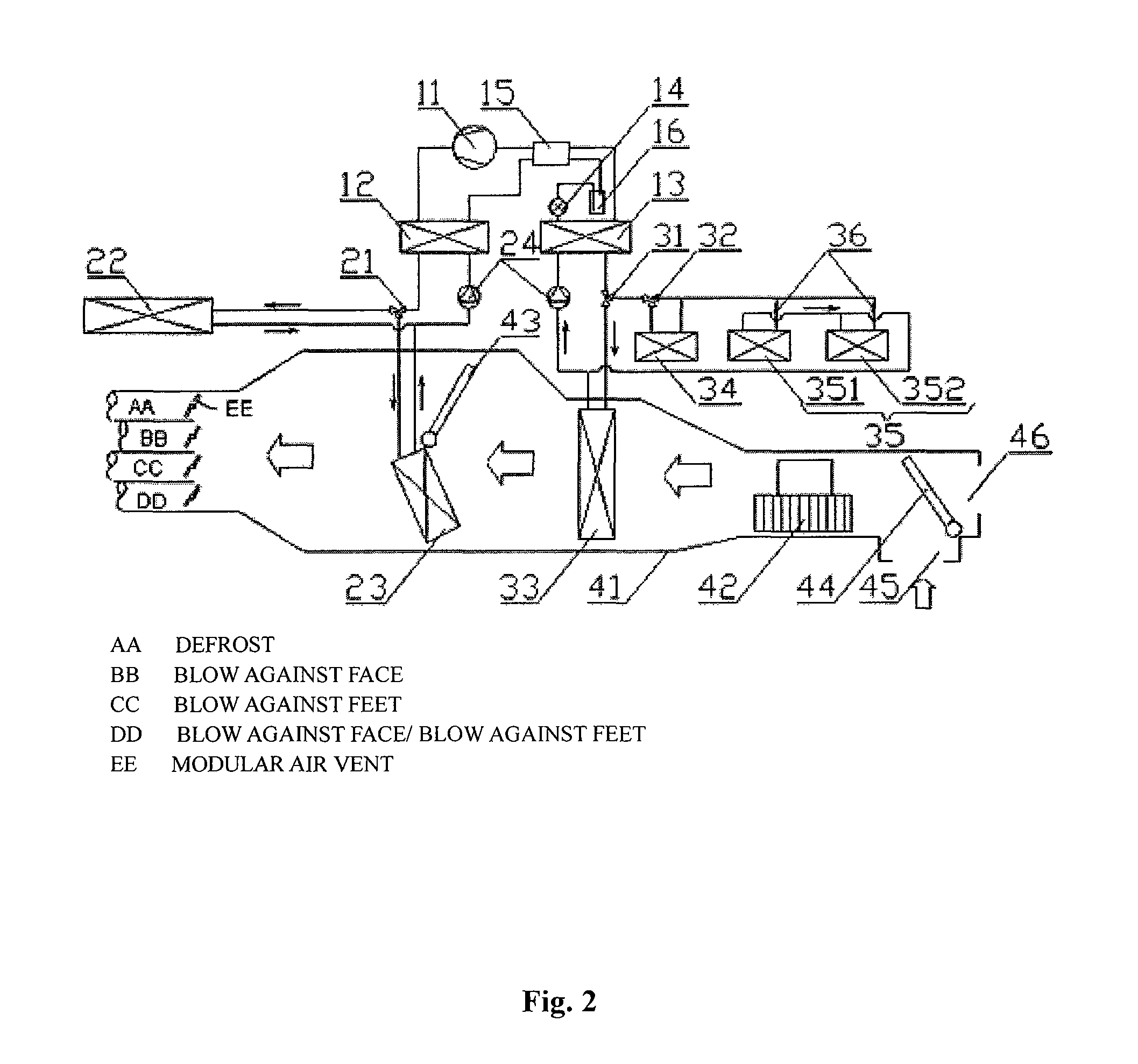Electric vehicle and thermal management system therefor
a technology of thermal management system and electric vehicle, which is applied in the direction of refrigeration components, transportation and packaging, light and heating equipment, etc., can solve the problems of reduced travel distance of the vehicle, low heating efficiency, and difficulty in satisfying the heating requirement, so as to reduce the charging amount of refrigerant, improve the effect of cooling the heat generating components and the comfort of the compartment, and reduce the heat waste
- Summary
- Abstract
- Description
- Claims
- Application Information
AI Technical Summary
Benefits of technology
Problems solved by technology
Method used
Image
Examples
first embodiment
[0035]Referring to FIGS. 1 and 2, FIG. 1 is a schematic structural view of a thermal management system in a first working mode according to the present application; and FIG. 2 is a schematic structural view of the thermal management system shown in FIG. 1 in a second working mode.
[0036]In the first embodiment, the thermal management system for the electric vehicle according to the present application includes a heat recovery cooling device, a refrigerating device, a heat exchanging device or heat exchanging circuit and a compartment temperature adjusting device. The refrigerating device includes a compressor 11, a condenser 12, a throttling element 14 and an evaporator 13 that are connected with each other by pipelines. The heat exchanging device includes a first air-cooled heat exchanger 22 and a heater 23 that are connected by pipelines. The heat recovery cooling device includes a heat exchanger 35 for heat generating components, a second air-cooled heat exchanger 34 and a cooler ...
second embodiment
[0051]Referring to FIG. 3, it is a schematic structural view of a thermal management system in the first working mode according to the present application.
[0052]Of course, in another specific embodiment, the compartment temperature adjusting device is a medium circulating device. The medium circulating device includes a heat exchanger 41′ within the compartment. The cooler 33, the heater 23 and the heat exchanger 41′ within the compartment are connected in series by pipelines. If the power pump 24 is also provided in the circulation circuit of the device, under the action of the power pump 24, the medium flows through the cooler 33 and the heater 23 to reach the heat exchanger 41′ within the compartment. A heat exchange occurs between the medium and the air in the compartment, thereby achieving the adjustment of the compartment temperature. The position of the cooler 33 and the heater 23 can be adjusted arbitrarily to facilitate the arrangement of other devices. Furthermore, the hea...
PUM
 Login to View More
Login to View More Abstract
Description
Claims
Application Information
 Login to View More
Login to View More - R&D
- Intellectual Property
- Life Sciences
- Materials
- Tech Scout
- Unparalleled Data Quality
- Higher Quality Content
- 60% Fewer Hallucinations
Browse by: Latest US Patents, China's latest patents, Technical Efficacy Thesaurus, Application Domain, Technology Topic, Popular Technical Reports.
© 2025 PatSnap. All rights reserved.Legal|Privacy policy|Modern Slavery Act Transparency Statement|Sitemap|About US| Contact US: help@patsnap.com



